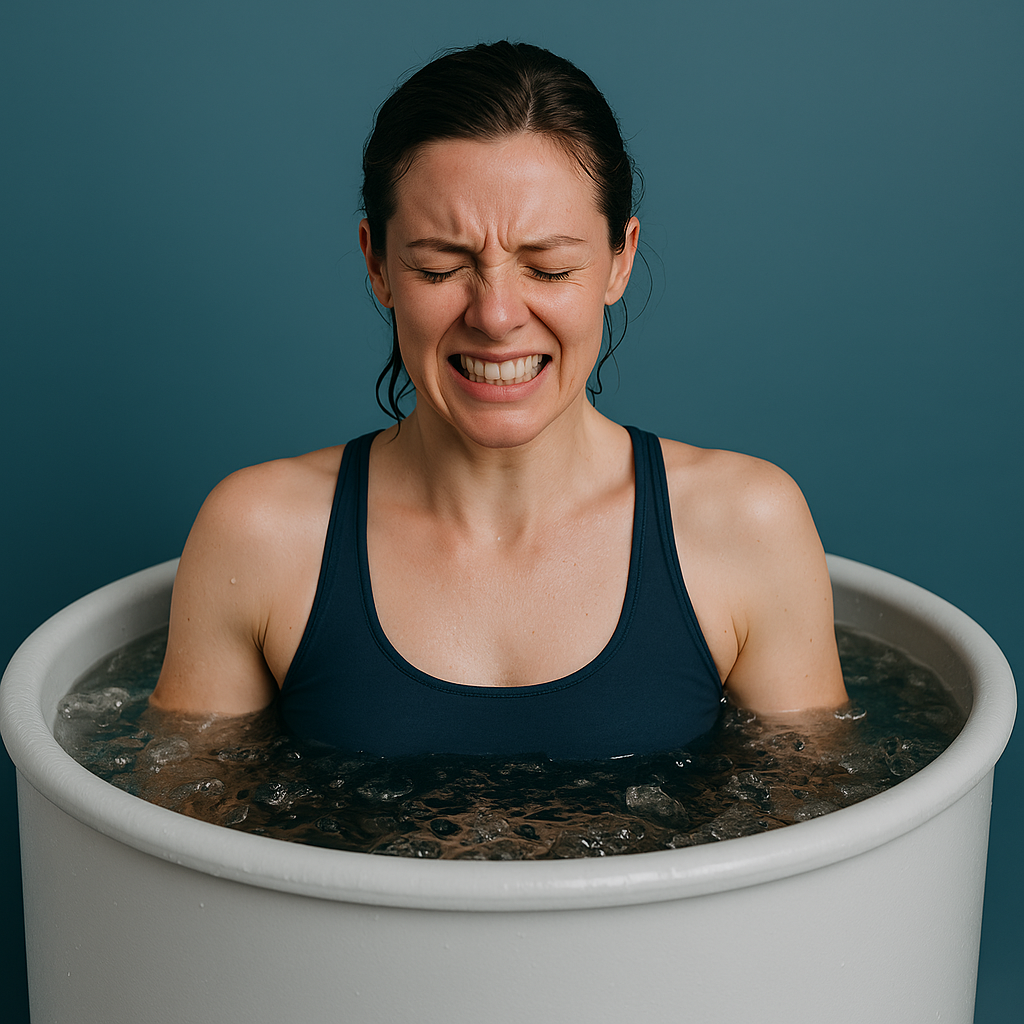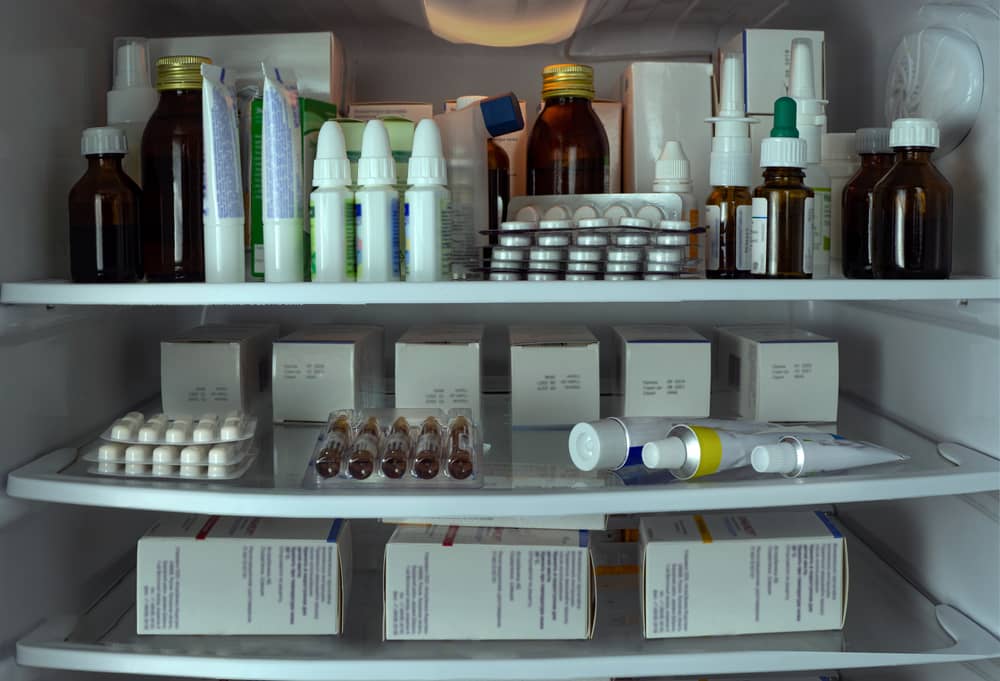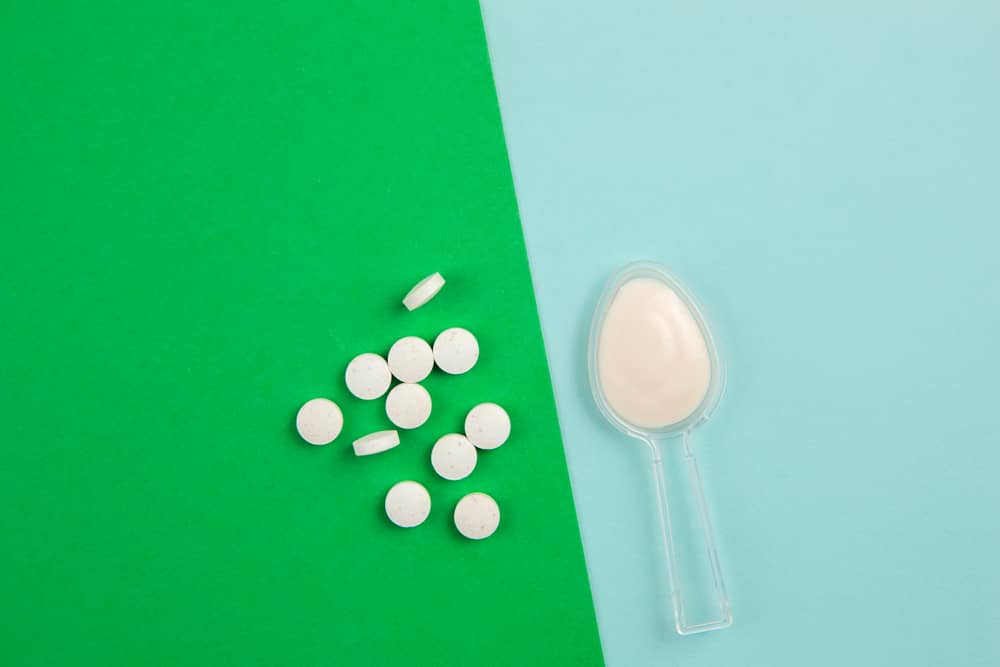Cold plunges have officially taken over the wellness world. Everyone from biohackers and athletes to influencers sipping celery juice in icy tubs are raving about them. It’s the newest wellness trend that promises everything we want: faster recovery, mental clarity, a boost in dopamine and even better skin.
But here’s the catch: almost all the hype surrounding cold plunges is based on studies conducted on men. For example, a widely cited study on muscle recovery after resistance training found that cold water immersion enhanced muscle function post-exercise, but if you dive deeper into the research, you’ll notice one interesting factor. All of the participants were men, and they were physically active young men.
So, what happens when women plunge into the same freezing waters? Do they get the same benefits, and are cold plunges good for women?
Spoiler! The science isn’t nearly as straightforward.
In this article, we’ll break down what cold plunges actually do, why they are a game changer and absolutely amazing for men, and whether women should think twice before following suit. (Spoiler #2: cold plunges aren’t horrible for women, but they’re not always the game changer that they’re made out to be!)
Why Cold Plunges Are Notorious Game Changers for Men
When it comes to ice baths and cold exposures, ment tend to reap the most notable rewards. The hype is absolutely real, and there’s real science behind it! You’ll find a bunch of studies that support cold plunges for men, and here’s why.
💪 Muscle Recovery & Inflammation
Studies on physically active men show that consistent cold water immersion (CWI) helps reduce post-excercise inflammation and soreness; thus, speeding up overall recovery. For example, one study found that CWI improved submaximal muscle function after resistance training.
There is a small caveat though. While CWI may expedite recovery, other research cautions against the use of CWI, as it may blunt long-term muscle growth and protein synthesis if used immediately post-workout. The solution? Wait 3 to 6 hours before jumping into icy cold water.
🧠 Mood & Neurochemical Boost
Cold plunges result in a surge of neurotransmitters, like dopamine, epinephrine, serotonin, noradrenaline and β-endorphin, being released into the body. One fMRI-backd study of whole-body cold exposure (which involves a 20 °C head-out plunge for 5 minutes) revealed significant improvements in positive mood states. Participants (both men and women) felt more active, alert, attentive, inspired and proud. They also felt less distressed and nervous.
Other studies have shown that dopamine levels surge up to 2.5x baseline and noradrenaline and adrenaline up to 5x over baseline after immersing in 14°C water for an hour.
🏋️♂️ Hormonal Response: Testosterone
There’s also been a lot of whispering about cold plunges being great for men, as it boosts testosterone levels. The research on testosterone and cold plunges is a bit mixed.
In one study, CWI led to a small drop in testosterone levels after a cold plunge. However, it boosted luteinizing hormone levels and noradrenaline levels. Noradrenaline levels were boosted by roughly 140%!
Other studies have shown that cold plunges can activate brown fat, which can help improve testosterone-to-estrogen ratio and also help with weight loss!
Bottom Line for Men:
Cold plunges offer a wide variety of benefits for men, like:
- ✅ Short‑term recovery and soreness relief after strength or endurance workouts.
✅ Immediate mood boost and stress resilience through neurochemical shifts
⚠️ Long‑term hypertrophy benefits may be blunted if used immediately after every resistance session, so wait 3 to 6 hours (although some studies say that 8 is even better!)
These are real, well-documented effects of cold plunges, but they are usually heavily based on men-only or men-majority studies. That’s why many claim cold plunges are a “game changer for men.”
Why Cold Plunges May Be Just So-So for Women
Are cold plunges good for women?
The answer is not as clear cut since a lot of studies were conducted with only men. Women have different bodies and hormones, which contribute to different effects to cold exposure.
So, let’s dive in below with what the science really says..
🌡️ Hormonal Sensitivity to Cold
Women naturally have a different baseline hormonal environment than men, especially when it comes to estrogen and progesterone. These hormones fluctuate throughout the menstrual cycle, and have a significant influence on everything from body temperature regulation to stress response.
After ovulating, women are in the luteal phase. During this phase, women tend to have a slightly higher overall core body temperature. As a result, they may feel less tolerant to cold, and a cold bath may feel much more uncomfortable. This discomfort can translate into raised cortisol levels.
😖 Cortisol and the Stress Response
In women, cold plunges may spike cortisol levels. Cortisol is also known as the stress hormone. It’s what your body releases when you’re stressed. While short-term cortisol boosts aren’t necessarily harmful and may even be beneficial, chronically elevated levels can lead to issues like:
Irregular cycles
Fatigue
Increased inflammation
Difficulty with weight regulation or fertility
Some women already operate with elevated cortisol (hello, modern stress culture!), so adding intense cold exposure, especially without proper recovery, could backfire.
🧬 Lack of Research = Lack of Guidance
The bottom line is this: there’s not that much information on how cold plunges affect women. Because of this reason, we’d be jumping to conclusions if we say that they are definitely and absolutely a must-try for women.
Unlike the wealth of biohacking tips available for men, there are no standardized protocols for cold plunging tailored to women. No recommendations based on menstrual phase, hormone profile, or even body fat distribution, all of which impact cold tolerance and metabolic response.
This doesn’t mean that women should avoid cold plunges entirely. But it does mean women may need to approach them more cautiously and should track how their bodies respond over time.
🚺 So-So Doesn’t Mean “Bad”
Just because we’re not too sure, it doesn’t necessarily mean that cold plunges are bad for woman. In fact, just to be clear, they aren’t harmful for all women. Some find jumping into icy cold water energizing, empowering and even mentally clarifying.
The main difference is that, among women, the effects of cold plunges tend to be:
More individualized
More dependent on stress levels or cycle phase
Less clearly beneficial for things like muscle recovery or testosterone
So... Are Cold Plunges Good for Women?
The short answer is that it depends, but they’re certainly not bad.
Cold plunges can be good for women, especially when used mindfully. Many women report feeling energized, mentally clear, and emotionally grounded after cold immersion. However, unlike men, women often experience more variability in how their bodies respond.
If you’re already stressed out, dealing with irregular periods, or sensitive to cold, it might be wise to start slow. Track how you feel during different phases of your cycle, keep sessions short (under 2 minutes), and avoid plunging right before or after intense workouts if muscle gains are your goal.
TL;DR
Yes, cold plunges can be good for women — but results vary.
Customize it to your body, your hormones, and your lifestyle.
You’re not missing out if it doesn’t feel like a miracle.
FAQ
❄️ Are cold plunges safe during your period?
Yes, they are, but many women report feeling more sensitive to cold during their period or during their luteal phase. To make sure that you are getting the intended benefits, start with shorter plunges and monitor your body’s response.
🧠 Do cold plunges help with mental health in women?
They can! Cold water immersion boosts dopamine and norepinephrine, which can improve mood and focus. Just watch for any increase in anxiety or tension afterward.
🌙 Should women cold plunge every day?
Since it’s impossible to know how your body will respond, it’s best to start off slow and get to know how your body responds and adjusts to the cold. Daily plunging may elevate cortisol in some women. Start with 2–3 times a week and assess how your body responds over time.
💪 Will cold plunges hurt my gains?
They absolutely can! If you’re strength training, avoid plunging immediately after your workout. Wait a few hours or save it for rest days to avoid blunting muscle growth.






